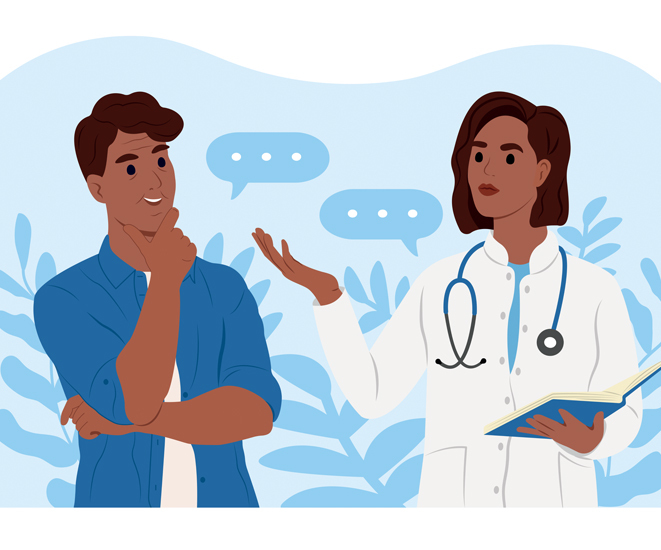Finding Comfort From Severe Pain
If you’ve ever had a severe headache that showed up as throbbing on one side of your head, it was probably a migraine. Roughly 39 million people in the U.S. alone have migraines which can have a debilitating effect on your life. But what exactly are migraines, why do they happen and how can you relieve them quickly? Let’s get into how you can find migraine relief.
What is a Migraine?
A migraine is an intense headache that usually occurs on one side of the head. The pain tends to be a throbbing sensation that can worsen when you move. Migraines can be so severe that they prevent you from carrying out normal activities, and you may experience other symptoms such as feeling or being sick and increased sensitivity to light and sound.
Migraines are more common in women, people with a family history of migraines and people with depression, anxiety and sleep problems.
Why Do Migraines Happen?
The exact cause of migraines is currently unknown, but scientists suspect they’re the result of abnormal brain activity, which affects nerve signals, blood vessels and chemicals in the brain.
People prone to migraines can be more likely to experience them due to certain triggers such as hormonal changes, dietary and environmental changes and some types of medication.
5 Ways to Instantly Relieve Migraines
Are you looking for instant relief from a painful migraine? Try these migraine remedies.
1. Use a Cold Pack
One of the most effective ways to instantly relieve migraines is with a cold pack. It’s one of the most accessible home remedies for migraines, and you won’t have to buy any specialist equipment.
Simply wrap ice cubes or frozen vegetables in a towel and hold the towel to your head for 15 minutes before taking a break. If the migraine pack persists, hold the towel to your head for a further 15 minutes after a 10-minute break.
You can also buy gel sheets such as this set from Amazon that have a cooling effect when applied to your forehead. These gel sheets have a similar effect to a cold pad and the cooling effect of each sheet lasts up to 8 hours.
Related Search Topics (Ads)
2. Take Painkillers
Painkillers that you can pick up in your local pharmacy are sufficient to treat migraine in many cases. You can use painkillers such as ibuprofen and naproxen.
If you suffer from frequent and severe migraines, you may have been prescribed specialist medication by your doctor. These drugs are known as triptans, and the most common triptans in the United States are eletriptan (Relpax), almotriptan (Axert), frovatriptan (Frova), sumatriptan (Imitrex), naratriptan (Amerge), rizatriptan (Maxalt) and zolmitriptan (Zomig).
Triptans can be injected, taken orally or taken in the form of a nasal spray. While some triptans can take up to an hour to work, others, such as triptan injections, get to work within 10 minutes
3. Apply Heat
Just like applying a cold pack to your head, applying heat is another form of temperature therapy that can be effective when fighting off a migraine attack. One of the easiest home remedies to carry out, you can apply heat using a heating pad on a low setting, a hot water bottle or a hot towel.
Just be careful not to heat the object excessively or hold it to your head for too long.
4. Adjust Your Environment
For many migraine sufferers, severe migraine attacks worsen with excessive light or sound. As well as taking a painkiller and applying cold or heat to your head, take a step away from whatever you’re doing and find a dark, quiet space where you can lie down.
Turn off the lights and, if possible, try and go to sleep. If you can’t get to sleep because of the pain, at least make sure you rest and don’t attempt to do anything particularly strenuous.
5. Drink a Caffeinated Beverage
According to Mayo Clinic, caffeine can relieve migraine pain in the early stage - but only in small quantities. It can also enhance the pain-reducing effects of Tylenol and aspirin, so you can take it alongside these painkillers for the best results.
When you feel a migraine attack coming on, try drinking coffee or tea or taking a caffeine tablet. Be careful not to drink too much caffeine in one go as this could lead to withdrawal headaches later on or could mess with your sleep, and poor sleep worsens migraines.
When Should You Go to the Doctor With Migraines?
You should make an appointment with your healthcare provider if you have frequent and severe migraine symptoms that cannot be managed with regular painkillers, such as ibuprofen or naproxen.
Even if you can find migraine relief with painkillers, it’s still worth seeking medical advice if you experience migraine pain for more than 5 days per month, as you could benefit from preventative treatment.

